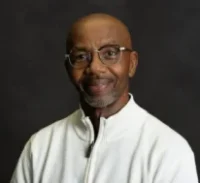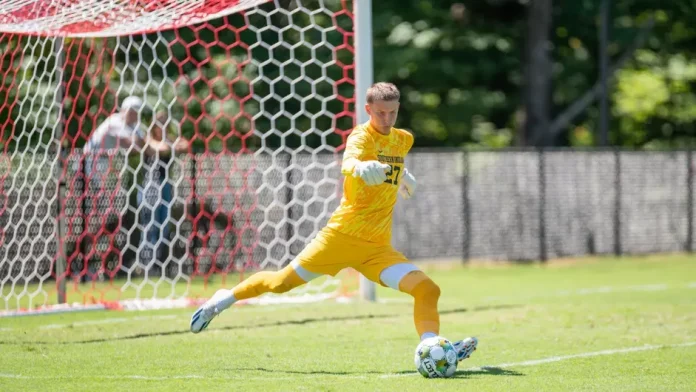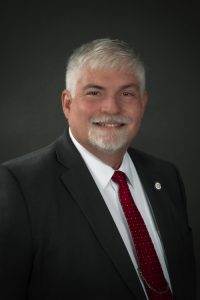|
||||||||||
|
||||||||||
|
||||||||||
|
||||||||||
|
||||||||||
|
HOT JOBS
Becker: Indiana Senate Republicans offering paid spring internships
STATEHOUSE — The Indiana Senate Republican Caucus is offering paid spring-semester internships in its communications, information technology, legal, legislative, page and policy offices during the 2026 session of theIndiana General Assembly, said State Sen. Vaneta Becker (R-Evansville).
Qualified candidates may be of any major and must be at least a college sophomore. Recent college graduates, as well as graduate and law school students, are also encouraged to apply.
Interns earn a $900 biweekly stipend and benefit from scholarship and academic credit opportunities, professional development, community involvement and networking.
Senate internships are full-time positions at the Statehouse in downtown Indianapolis that typically begin with a mandatory orientation in late December or early January and conclude at the end of the legislative session in March 2026.
“Our internship program gives participants a chance to contribute to the work we do every day while providing the opportunity to meet a wide array of people and gain professional experience,” Becker said. “This program builds valuable life skills, and I highly recommend any interested college student or recent graduate apply.”
Eagles earn third consecutive shutout with scoreless result at Bellarmine
LOUISVILLE – University of Southern Indiana Women’s Soccer claimed a third consecutive result on the road Sunday afternoon, battling Bellarmine University to a 0-0 draw.
With the scoreless draw, USI Women’s Soccer (2-5-1) also posted its third straight shutout after recording a pair of 2-0 wins earlier in the week against Southern Illinois University and Valparaiso University. Meanwhile, Bellarmine (4-0-2) also maintained its unblemished record.
On Sunday, USI and Bellarmine added another chapter to the head-to-head history between the two programs, which dates to when both schools were in NCAA Division II and in the Great Lakes Valley Conference.
The USI defense stood tall in the early going when Bellarmine fired three shots in the first four minutes. Redshirt junior goalkeeper Anna Markland made an early save, and the defense blocked a pair of shots.
The Eagles’ first shot came near the 24-minute mark when sophomore defender Emma Schut launched a shot off a corner kick that just missed. Another good chance for USI was just before the 36-minute mark when a shot by graduate midfielder Maggie Duggan went off the crossbar, keeping the game a scoreless deadlock going into halftime.
Bellarmine came out with some early pressure on the attacking end again to begin the second half, but USI’s defense remained strong and turned away the Knights with a few more blocked shots. Markland also snagged another save.
Around the 70-minute mark, junior forward Grace Bamber had a pair of shots on goal saved by the Bellarmine goalkeeper. Down the stretch, redshirt sophomore forward Eva Boer had an attempt just miss high, while the defense continued to stay solid to take the 0-0 score into the final whistle.
While Bellarmine had 21 shots, the Screaming Eagles limited the Knights to only four shots on goal, all of which were saved by Markland. Plus, the USI defense blocked 11 shots on Sunday. Markland and the Eagles’ defense have held opponents scoreless for the last 286 minutes of action through Sunday’s game at Bellarmine.
Offensively, USI totaled seven shots with two on goal. Schut and Bamber tied for a team-high two shots, with Bamber leading with both shot attempts on target.
The Screaming Eagles will be back in action next Sunday, September 14, returning home to Strassweg Field against Purdue University Fort Wayne for Alumni Weekend. Admission to next Sunday’s match is free courtesy of ProRehab and can be seen with a subscription to ESPN+.
USI Men’s Soccer falls in closing minutes to IU Indy
EVANSVILLE, Ind.– University of Southern Indiana Men’s Soccer (1-3-0) fell to Indiana University Indianapolis (2-1-2) 3-2 in the third game of its five-game homestand Saturday afternoon at Strassweg Field. IU Indy pulled ahead with a game-winning goal in the final three minutes of the match.
Following Monday’s loss to the University of Wisconsin-Green Bay, USI Men’s Soccer fought hard, scoring a season high two goals on a season high 16 shots, showing the best offensive output so far this season.
The Screaming Eagles made their presence known early, recording shots from sophomore midfielder Ahiro Nakamae and junior midfielder Will Kirchhofer. The Eagles‘ pressure continued, culminating in a 41st-minute penalty kick goal from sophomore forward David Davila. Davila, making his first appearance of the season, faked out the goalkeeper and gave USI the 1-0 lead.
The Eagles carried the lead into the break. The offensive pressure from the Eagles showed on the scoreboard, as they finished the half with a 7-4 lead in shots. Freshman goalkeeper Jacob English tallied two saves, helping keep the Jaguars off the board.
IU Indy dominated the second half, as sophomore defender Stan Klaver scored two goals within two and a half minutes of each other. The first came at 73:05, tying the match, and the second one at 75:33, putting the Jaguars ahead.
USI punched back with a goal from junior Kristopher Martial off a free kick from freshman Edin Cvorovic at 83:37, tying the match at two. The tie did not hold long, as the Jaguars scored the game-winning goal in the 88th minute, giving them a 3-2 lead.
The Eagles had multiple opportunities late, with a Kirchhofer blocked shot in the box, and a corner kick in the closing seconds being deflected out of play. Freshman midfielder Isaac Weidner led the team in total shots with four, while Kirchhofer and Davila tied for shots on goal with three apiece.
Next, USI Men’s Soccer will host the 2025 Mayor’s Cup against crosstown rival, the University of Evansville, September 13 at Strassweg Field. Kickoff is set for 7 p.m.
EPD DAILY ACTIVITY REPORT
FOOTNOTE: EPD DAILY ACTIVITY REPORT information was provided by the EPD and posted by the City-County-County Observer without opinion, bias, or editing.
The Word in 120, The Knowledge of God’s Word
The Knowledge of God’s Word by Jerome Stewart 
Knowledge is power. When it comes to the word of God it is an on-going process of learning, that will never end on the time side of life. The prophet Isaiah chapter 28 vs. 19 says; “Precept must be upon precept, line upon line, here a little and there a little.” What does that mean? Think of building blocks stacked, one on top of the other. It’s a repetitious method in order to achieve the end result. When it comes to the word of God the goal is to acquire the knowledge necessary, which will allow the individual to be in the presence of the Godhead, meaning the Father, Son and the Holy Spirit forever. There’s an old adage that says; “it’s the slow drip that wears out the rock.” Allow the word of God to drip words of wisdom into your heart on a continuous basis. There can be no let up. The devil is always busy! James 4 vss. 13 and 14 says; “God resist the proud, But gives grace to the humble.” Therefore submit to God. Resist the devil and he will flee from you. Draw near to God and He will draw near to you. Cleanse your hands, you sinners; and purify your hearts you double-minded.” Do not allow anyone, to cause you to believe that Jesus is a figment of the imagination of mankind, or trick you, into believing there is no such thing as eternal life. John chapter 5 vs. 24 Jesus says; “Most assuredly, I say to you, he who hears My word and believes in Him who sent Me, has everlasting life, and shall not come into judgment, but has passed from death into life.” Learn to follow Jesus! The Apostle Peter says in 2nd. Peter chapter 1 vss. 16 thru 19; “For we did not follow cunningly devised fables when we made known to you the power and coming of our Lord Jesus Christ, but were eyewitnesses to His majesty. For He received from God the Father honor and glory when such a voice came from the Excellent Glory: “This is My beloved Son, in whom I am well pleased.” And we heard this voice which came from heaven when we were with Him on the Holy Mountain. And so we have the prophetic word confirmed which you do well to heed as a light that shines in a dark place, until the day dawns and the morning star rises in your hearts.” So the question is this. Do you know Jesus? If not: you need to ASAP.
Board of School Trustees of the EVSC
The Board of School Trustees of the Evansville Vanderburgh School Corporation will meet in executive session at 3:00 PM. on Monday, September 8, 2025 in the Schroeder Conference Centre located in the EVSC Administration Building, 951 Walnut, IN 47713, Evansville, IN. The session will be conducted according to I.C. 5-14-1.5-6.1. The purpose of the meeting is to discuss the following: collective bargaining, (b)(2)(A); initiation of litigation or litigation that is either pending or has been threatened specifically in writing, (b)(2)(B); purchase or lease of property, (b)(2)(D); discussion of the assessment, design, and implementation of school safety and security measures, plans, and systems (b)(3); and to train school board members with an outside consultant about the performance of the role of the members as public officials (b)(1
USI to celebrate Inauguration of fifth President, Steven J. Bridges, October 16
The public is cordially invited to attend the Inauguration of Steven J. Bridges as the fifth President of the University of Southern Indiana and first alumnus in the role. The ceremony begins at 10:30 a.m. Thursday, October 16 in Liberty Arena, Home of the Screaming Eagles. Doors will be open at 9 a.m., and guests should be seated by 10:15 a.m.
Attendance is free and seating will be open, but those who plan to attend the ceremony are asked to RSVP at https://www.usi.edu/inauguration/inauguration-rsvp. Following the ceremony, a luncheon for all guests will be held in the adjacent Screaming Eagles Complex.
The theme, “Built on Purpose,” reflects both the University’s 60-year mission of delivering exceptional, transformative education and the personal journey of President Bridges, an alumnus whose 36-year career at USI has been dedicated to service, family and determination. The ceremony will highlight the University’s proud past while embracing a future built with vision, intention and purpose.
As part of the formal ceremony, presidents and delegates of other colleges and universities from around the country will participate, along with USI students, faculty, alumni, members of the Board of Trustees, past USI Presidents, elected officials, including Evansville Mayor Stephanie Terry, and other special guests. Processional participants will wear traditional academic regalia, many wearing the colors of the institution they represent or graduated from.
F











